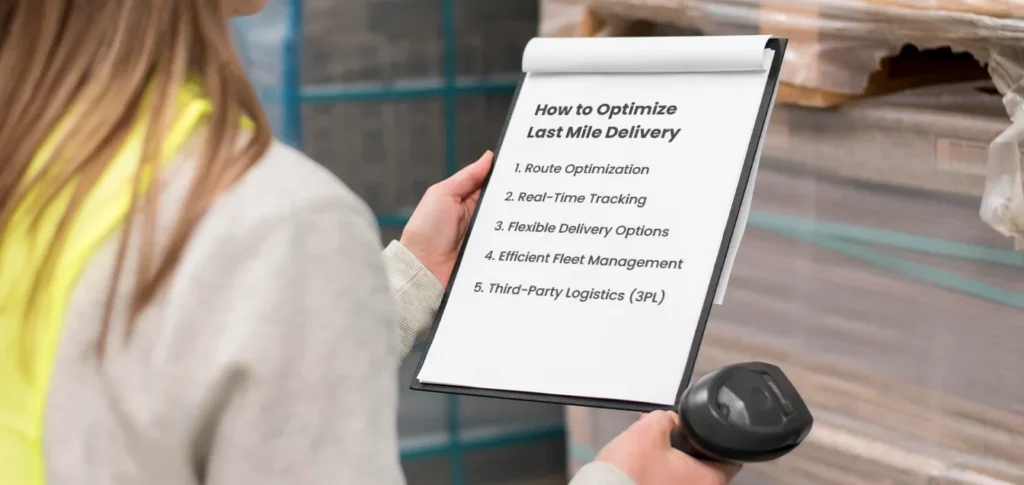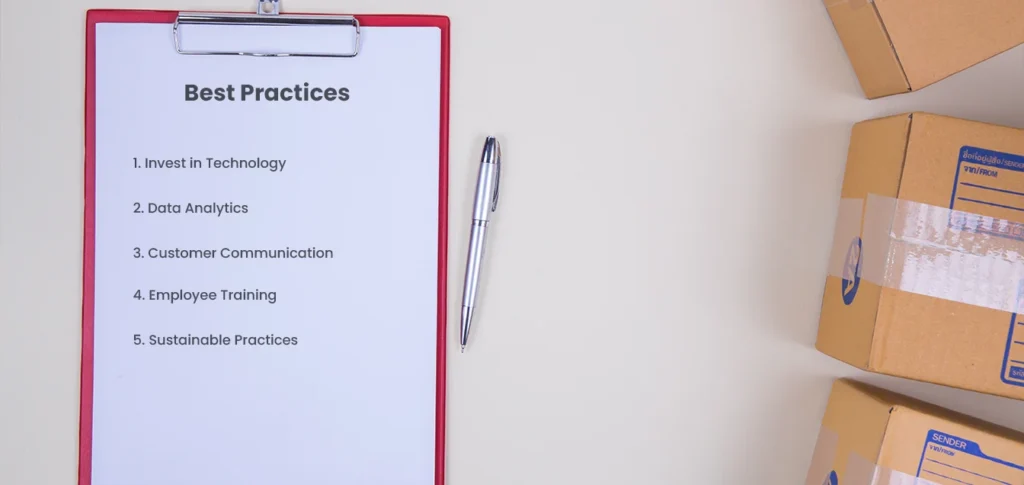In today’s fast-paced world, businesses are increasingly focusing on how to optimize last-mile delivery efficiency. This critical phase in the supply chain determines customer satisfaction and operational success. Understanding the best practices to optimize final-mile delivery efficiency can significantly enhance service quality and profitability. Let’s dive into how to optimize last-mile delivery efficiency and why it matters.
Table of Contents
What is Last Mile Delivery?
During last-mile delivery, goods are transported from a distribution center to the end customer as the final step in the delivery process. As part of the logistics chain, this is often the most challenging and expensive stage. Understanding how last-mile delivery works is crucial for businesses aiming to improve efficiency and customer satisfaction.
Why Businesses Need to Optimize Their Delivery

Optimizing last-mile delivery efficiency is essential for businesses to meet customer expectations for fast, reliable, and affordable delivery. Delays or inefficiencies in this phase can lead to dissatisfied customers and increased operational costs. Companies must focus on the best ways to optimize final-mile delivery efficiency to stay competitive and ensure customer loyalty.
Which Businesses Mostly Need Last Mile Delivery Services?
Businesses that heavily rely on timely and accurate deliveries, such as e-commerce, food delivery, and retail, need last-mile delivery services the most. Additionally, industries like healthcare and pharmaceuticals, which require prompt and secure delivery of products, also benefit significantly from efficient last-mile delivery solutions. Partnering with a reliable last mile carrier is crucial for these businesses to maintain high service standards.
How to Optimize Last Mile Delivery

To optimize last-mile delivery efficiency, businesses must implement strategic practices and utilize advanced technologies. Here are some top tips to improve last-mile delivery efficiency:
- Route Optimization: Utilizing sophisticated route planning software can help drivers avoid traffic congestion and reduce delivery times.
- Real-Time Tracking: The ability to track products in real-time enhances transparency and customer confidence.
- Flexible Delivery Options: Offering flexible delivery schedules and locations can increase customer satisfaction and reduce failed deliveries.
- Efficient Fleet Management: Ensuring your delivery fleet is well-maintained and efficiently managed can improve delivery performance.
- Third-Party Logistics (3PL): Partnering with 3pl logistics Canada can help businesses scale their delivery operations and manage costs effectively.
Benefits of Last-Mile Delivery Efficiency
Optimizing last-mile delivery efficiency offers numerous benefits, including:
- Enhanced Customer Satisfaction: Faster and reliable deliveries lead to happier customers.
- Cost Savings: Efficient delivery processes reduce fuel consumption and labor costs.
- Competitive Advantage: Businesses that excel in last-mile delivery can distinguish themselves from competitors.
- Improved Operational Efficiency: Streamlined processes lead to better resource utilization and productivity.00
Strategies for Success in Final Mile Delivery
Adopting effective strategies for success in final mile delivery is essential for optimizing last-mile delivery efficiency. Here are key strategies that can drive success:
- Technology Integration: Leveraging technologies like AI, machine learning, and IoT for better route planning and real-time delivery tracking.
- Customer-Centric Approach: Prioritizing customer preferences and feedback to enhance delivery experience and satisfaction.
- Sustainable Practices: Implementing eco-friendly delivery methods, such as electric vehicles or bike couriers, to reduce carbon footprint.
- Data-Driven Decision Making: Using data analytics to gain insights into delivery performance and identify areas for improvement.
- Collaboration with Last Mile Carriers: Partnering with reliable last mile carriers to ensure timely and efficient deliveries.
Best Practices to Optimize Final-Mile Delivery Efficiency

Implementing the following best practices can further optimize final-mile delivery efficiency:
- Invest in Technology: Leveraging advanced delivery management software and automation tools can streamline operations.
- Data Analytics: Utilizing data analytics helps in identifying bottlenecks and areas for improvement.
- Customer Communication: Keeping customers informed about their delivery status can enhance their experience.
- Employee Training: Regular training for delivery personnel ensures adherence to best practices and safety protocols.
- Sustainable Practices: Adopting eco-friendly delivery methods can reduce environmental impact and appeal to eco-conscious consumers.
Conclusion
Optimizing last-mile delivery efficiency is crucial for businesses to meet modern consumer demands and maintain a competitive edge. By understanding and implementing the best practices to optimize final-mile delivery efficiency, companies can ensure timely, cost-effective, and reliable deliveries. Embracing these strategies for success in final-mile delivery will lead to satisfied customers and improved business performance.





